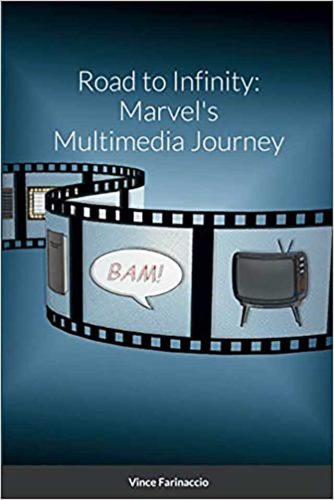Marvel Hero
Daredevil was added to Marvel’s roster of superheroes.

 This year marks the 60th birthday of the X-Men and the Avengers, two of Marvel Comics’ most iconic superhero teams. But the latter group owes its existence to Daredevil, the guardian of New York City’s Hell’s Kitchen whose big Six-O will not occur until next year.
This year marks the 60th birthday of the X-Men and the Avengers, two of Marvel Comics’ most iconic superhero teams. But the latter group owes its existence to Daredevil, the guardian of New York City’s Hell’s Kitchen whose big Six-O will not occur until next year.
Part comic book precedent and part literary influence, Daredevil, the Man Without Fear, was an addition to Marvel’s roster because the rights to the Golden Age Lev Gleason-Charles Biro character of the same name had expired in 1963 and Marvel’s then-publisher Martin Goodman decided a revival was in order.
Placed in charge of creating the new version of Daredevil, Stan Lee chose a different character type for the hero, inspired by the mystery novels of Baynard Hardwick Kendrick, an author of the mid-20th century whose unique twist for the detective protagonist of his popular crime series caught Lee’s attention.
“I remembered some books I had read years ago,” Lee explained in Son of Origins of Marvel Comics, “mystery stories about a blind detective named Duncan Maclain. If a man without sight could be a successful detective, think what a triumph it would be to make a blind man a comic book superhero.”
Lee didn’t simply place a Maclain-like character into a Marvel crime drama. He shaped the hero into a colorfully clad athlete evoking the dexterity and look of an acrobat. Instead of the boomerang of his Golden Age counterpart, the character carried a billy club.
Lacking the superpowers usually associated with comic book heroes, Marvel’s Daredevil, whose alter ego is attorney Matt Murdock, would have his remaining senses heightened, the result of childhood exposure to radiation that cost him his sight.
“Originally, I wanted him to be a gymnast,” Lee stated in Will Murray’s account of the character’s untold origin in Overstreet Comic Book Price Guide. “So, I thought maybe I’d make him a circus acrobat. But somehow, I decided that was a little unoriginal.” The circus idea can be seen in the superhero’s initial yellow-red-and-black costume used in the first six issues before it was altered to the familiar red outfit.
Murray also sees the character as “an updating of the Two-Gun Kid whom Lee had reinvented with Jack Kirby in 1962. Frontier lawyer Matt Hawk became Manhattan attorney Matt Murdock.”
The Daredevil comic unintentionally led Marvel to create the third of its superhero teams. With Fantastic Four comics already selling well, the company was preparing to launch The Uncanny X-Men along with Daredevil in summer 1963, but the latter had fallen behind schedule as veteran artist Bill Everett attempted to draw the comic each night after returning home from his day job.
To buy time, Lee gathered together several existing characters from the publisher’s roster to create a superhero collective he would call the Avengers. Teaming Iron Man, Thor, Ant-Man, the Wasp and the Hulk, Marvel unveiled its popular, ever-changing group of superheroes in the September 1963 issue of The Avengers. Three issues later, a revived Captain America joined the ranks.
As for Daredevil, he would finally premiere in the April 1964 issue of his series. Over the next six decades, his character would develop into one of Marvel’s most complex personas, battling the contradictions of his chosen careers (lawyer by day and vigilante by night) as often as the ruthlessness of criminals.
As M.S. Wilson notes in his essay “Daredevil: Not Ready for Prime Time,” it was nearly 50 years before the Man Without Fear joined the Avengers, and it “wasn’t one of the ‘official’ Avengers teams headed by Iron Man or Captain America, but the New Avengers…” Maybe the official group hadn’t thanked him after all that time.
Vince Farinaccio’s latest book is Road to Infinity: Marvel’s Multimedia Journey, available at Amazon.com








